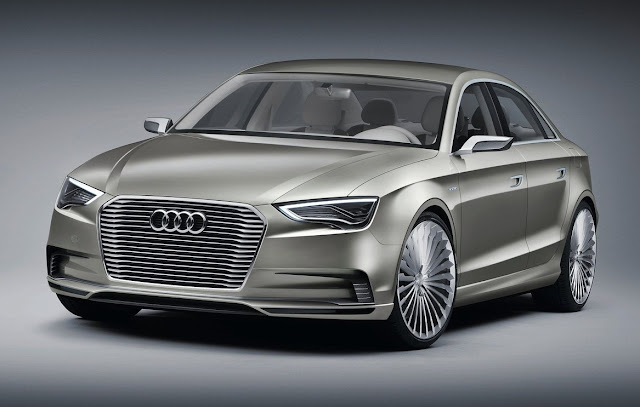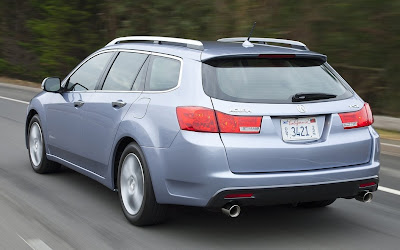Chevrolet celebrated Earth Day at the 2011 New York Auto Show by introducing the all-new 2013 Chevrolet Malibu ECO, the most fuel-efficient midsize sedan in its 100-year history. It features eAssist™ "light electrification" technology, which is engineered to deliver an estimated 26 mpg in city driving and 38 mpg on the highway without compromising performance.
ECO is based on the all-new, 2013 Malibu sedan, which will be sold in nearly 100 countries on six continents. Sales of the new Malibu begin with the ECO model in the United States in early 2012. The Malibu LS, LT and LTZ trim level offerings join the ECO in summer 2012. Pricing will be announced later.
"The Chevrolet Malibu ECO is a smart choice for customers who want excellent fuel economy without the price premium of popular hybrid sedans," said Rick Scheidt, vice president of Chevrolet marketing. "The Malibu ECO's 38-mpg highway estimate is comparable with those hybrids."
Malibu's eAssist system uses a state-of-the-art lithium-ion battery and an electric motor-generator to enable regenerative braking electric assist and start-stop functionality. It is efficiently sized, weighing only 65 pounds (29 kg).
Chevrolet Malibu ECO also features an aerodynamic exterior - including underbody aero enhancements - and electronically controlled shutters in the lower grille that close at higher speeds to push more air over and around the vehicle. These enhancements increase aerodynamic efficiency to boost fuel economy.
An ECO gauge in the cluster continuously responds to driving behavior, encouraging fuel-efficient driving, while an Auto Stop Indicator on the tachometer informs the driver when the engine is in start-stop mode.
"Malibu ECO exemplifies Chevrolet's drive to use technology that delivers high-value, gas-friendly performance," said Scheidt. "In fact, the Malibu ECO delivers the fuel economy of a compact car in a midsize sedan."
eAssist details
Chevrolet Malibu ECO's eAssist system is mated to a 2.4L Ecotec direct-injection four-cylinder engine and next-generation six-speed automatic transmission. The 2.4L engine is efficient and lightweight, featuring dual-overhead cams, direct injection, continuously variable intake and exhaust timing and electronic throttle control, as well as a lightweight aluminum cylinder block and cylinder head. It is rated at an estimated 180 horsepower (134 kW) and is a variant of the same engine that was recognized as one of Ward's Ten Best Engines in 2010.
Along with the Ecotec 2.4L and six-speed transmission, the eAssist system uses power stored in the air-cooled, lithium-ion battery to provide needed electrical boost in various driving scenarios, optimizing engine and transmission operation. An advanced 115V lithium-ion battery and latest-generation 15-kW motor-generator unit help increase fuel economy through:
Regenerative braking, which provides up to 15 kW of electricity to charge the battery
Providing up to 15 hp (11 kW) of electric power assistance during heavier acceleration
Using electricity instead of gasoline when stopped, with automatic and smooth engine start-stop functionality
Aggressive fuel cut-off during deceleration down to zero mph for added fuel savings
Intelligent charge/discharge of the high-voltage battery.
The eAssist system captures up to 15kW of energy that would be normally lost during braking and uses it to recharge the lithium-ion battery. The system also shuts down fuel delivery in certain deceleration conditions, further improving fuel economy. While in fuel shut-off mode, the motor-generator unit continues spinning along with the engine to provide immediate and smooth take-off power when the driver presses on the accelerator. As the vehicle comes to a stop, the engine's start-stop function is active when the motor-generator unit brings the engine to a smooth stop to position it properly for a smooth restart when the brake is released.
A hill-assist system captures brake pressure to help keep the vehicle stationary when eAssist's start-stop function is activated on a moderate or steep grade, allowing the driver to accelerate more smoothly from a stop.
Chevrolet Malibu ECO's eAssist power pack brings together the lithium-ion battery, the integrated power inverter and 12V power supply. It is located in the trunk, behind the rear seat. The electric motor-generator is mounted to the engine in place of the alternator to provide both motor assist and electric-generating functions through an engine belt-drive system. The motor-generator is a high-performance, compact induction motor that is liquid-cooled for increased performance and efficiency. An electric fan cools the power pack, drawing air from a vent located behind the rear seat.
Thanks to eAssist technology, which also enables a numerically lower final drive ratio, the Chevrolet Malibu ECO can travel as much as 550 miles between fill-ups, despite having only a 15.8-gallon gas tank.
Aero efficiency
Chevrolet Malibu ECO - and the entire 2013 Malibu lineup - was designed to be aerodynamically efficient, with a coefficient of drag near the standout performance of the Chevrolet Volt extended-range electric vehicle.
Aerodynamic design engineers removed about 60 counts of wind drag from the new Malibu, compared to its predecessor. Malibu spent hundreds of hours in GM's wind tunnel, fine-tuning the form to maximize fuel efficiency. For example, engineers shaped Malibu's front corners so that air runs close and uninterrupted along the body sides to the rear of the vehicle.
Chevrolet Malibu ECO is among the first in the midsize segment with a fuel-saving, active shutter system in the lower grille. The Malibu ECO's active shutter system automatically closes airflow through the lower intake opening when air intake is least needed. When closed, the shutter system enhances aero performance by redirecting airflow around the front of the vehicle and down the sides, rather than through it. The shutter is open or closed based on engine coolant temperature and speed. For example, the shutters open when the car is traveling up a hill, pulling a trailer, or in hot city driving; the shutters close at highway speeds when engine cooling is less required.
Other aerodynamic features on the Chevrolet Malibu ECO include:
Outside rearview mirrors designed to maximize aerodynamic efficiency
Taillamps are shaped for aero performance without design penalty
Four underbody panels - more commonly found on premium-priced cars - cover approximately 50 percent of the lower portion of the vehicle and provide an aerodynamically clean flow path under the vehicle
Standard 17-inch wheels and low-rolling-resistance tires engineered to improve fuel economy.
About the all-new 2013 Malibu
The Chevrolet Malibu ECO is part of the all-new, 2013 Malibu lineup - Chevrolet's first global midsize sedan - which gives customers more style, fuel efficiency, content and features, craftsmanship, and dynamic capabilities rivaling high-end sedans. Product highlights for North American models include:
Expressive exterior design with a wide, athletic stance
Segment-best aerodynamics - close to those of the Chevrolet Volt extended-range electric car - that enhance fuel efficiency and reduce wind noise, including active electronic shutters on select models
All-new, Chevrolet-signature dual-cockpit interior that is more spacious, features premium materials and is engineered to be the quietest in the midsize segment
New Chevrolet MyLink connectivity seamlessly integrates online services like Pandora® Internet radio and Stitcher SmartRadio®
European-influenced ride and handling traits
New safety features and technologies including up to 10 air bags, ultra-high-strength steel, lane departure warning/forward collision warning and rearview camera system.
The exterior design of the all-new Malibu carries DNA from its sister vehicles, the Camaro and Corvette. A wider stance, broad shoulders and an integrated rear spoiler bring a new athleticism to Malibu and give it a more aggressive, track-tested appearance. It has a 4.5-inch (114mm) shorter wheelbase and 62-inch (1,574mm) front and rear tracks that are more than 2 inches (51mm) wider than the model it replaces.
The Malibu's interior was designed to bring an element of sophistication to everyday driving, featuring an all-new dual cockpit design with more room, thanks to its increased width. Compared to the previous model, Malibu has nearly four cubic feet (113 L) of additional interior volume, along with more front and rear shoulder and hip room and more than one cubic foot (28 L) of extra trunk space. Available soft, ice-blue ambient lighting reflects off of and complements chrome accents and ensures even, consistent illumination along the instrument panel and in storage pockets.
The Malibu also has a number of storage areas, including a radio face that articulates up and down to reveal a six-inch deep, illuminated storage area behind its seven-inch touch-screen radio display - a U.S. first in a midsize car. Malibu will also offer a full range of the latest infotainment options, including new color radio systems and an available navigation system.
Malibu will include Chevrolet's new MyLink infotainment package at launch. It builds on the safety and security of OnStar and seamlessly integrates online services like Pandora® Internet radio and Stitcher SmartRadio®. MyLink integrates wireless connectivity through Bluetooth to enable hands-free use of selected smart phone apps while the device remains safely stowed. It features a high-resolution, full-color touch screen display designed to manage the number of steps required to complete a task.
A global lineup of fuel-efficient and powerful four-cylinder engines complements the Malibu's European-inspired driving characteristics. In addition to the ECO's Ecotec 2.4L engine, the Malibu's North American lineup also features an all-new Ecotec 2.5L dual overhead cam, four-cylinder engine with direct injection. It has new features, including enhanced authority continuously variable valve timing, variable-displacement oil pump and electronic thermostat that save fuel while delivering V-6-like performance. It is estimated the engine will be SAE certified at more than 190 horsepower (141 kW) and 180 lb.-ft. of torque (245 Nm). Both engines are mated to a Hydra-Matic 6T40 six-speed automatic with features designed to enhance powertrain efficiency.
When it comes to the driving experience, the 2013 Chevrolet Malibu has been engineered to deliver ride and handling capabilities that are best-in-class and on par with more expensive sports sedans. These include:
A solid body structure as stiff as any in the global midsize sedan market, allowing for precise tuning and dynamic vehicle control
A premium steering gear that ensures smooth, precise responsiveness and on-center feel
Proven and continuously refined MacPherson strut front and mutli-link rear suspensions
Large, ventilated front disc and solid rear disc brakes, clamped on by dual-piston front and single-piston rear aluminum calipers, which are expected to deliver best-in-class stopping distance
An isolated engine cradle for tuned, refined feedback, without noise or vibration
Fuel-saving electric power rack-and-pinion variable-effort power steering, resulting in effortless low-speed maneuvers and a higher degree of steering feel at higher speeds
Chassis control technologies include four-channel anti-lock brakes, full-function traction control, four-corner electronic stability control, electronic brake force distribution, brake assist system, corner brake control, hydraulic brake fade assist and drag torque control.
Read More!












































